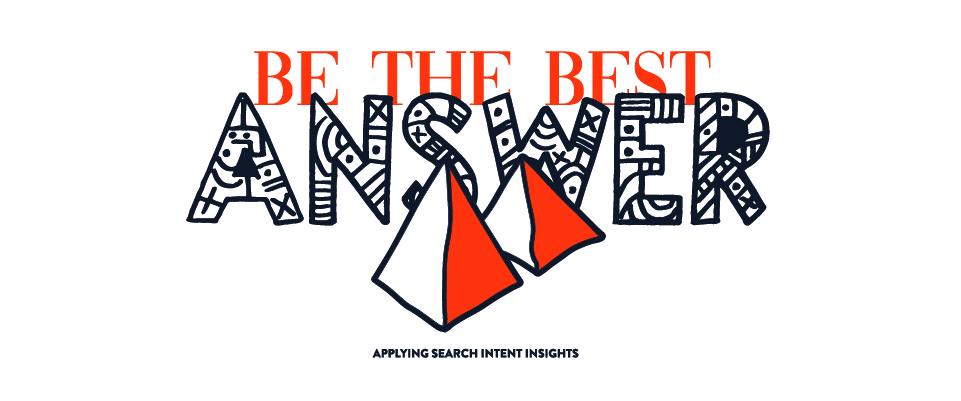Search intent refers to search engines’ attempt to accurately match answers to a given web query from a web searcher. At the heart of every web result is a person delivering a search query (question) and a search engine attempting to discern not simply what’s being asked, but also what provides the best, most accurate answer (search result). Therefore, when you analyze the search engine results pages (SERPs), you’re getting a firsthand look at what search engines think is the best result, or reward, for a given query.
“When you press the button to show you what the answer is to the question, that’s Google telling you ‘This is the best answer we could find on the Internet for that question.'” —Russ Jones, Moz
That’s search intent: marrying a query with the best search result.
If, as content creators, we can understand what content Google is looking to reward for a given search query, we stand a much better chance of being rewarded with higher rankings in the SERPs, and earning the click.
In 2018, we all learned to read the tea leaves — er, SERPs — using them as a guide from Google regarding the content type it’ll most easily reward for a given set of keywords. The learnings were illuminating and, in some cases, inspiring.
Things don’t always pan out as planned.
For example, an informational query you were hoping to nail with an in-depth, middle-of-the-funnel guide might never show up as planned because Google saw the query as a bottom-of-the-funnel, action query for web searchers ready to buy. But at least you didn’t waste your time creating content that was never going to reach the intended audience.
But all was not lost, given your experimentation has yielded deep, rich clues to what Google and web searchers are looking for. Now all you have to do is create the types of content both parties are looking for, and, voila, the rankings, traffic, and conversions should flow in like waters from the Nile.
Or so the thinking goes.
Understanding what Google and web searchers want is only part of the battle; the devil is in the details, which highlights a problem: execution.
We also need to know the best means of creating these ideal types of content, an element that covers more of the how than the what of content creation. The good news is, as skilled content creators (writers, strategists, specialists, etc.) we’re uniquely qualified to ace this area and bridge the gap.
Nailing search intent is the starting point, not the goal for your content. As a dyed-in-the-wool content guy, helping businesses create the types of content that get them found in the SERPs and chosen via a click is important to me. What I too often see, however, is content that is done well, but that does not meet the threshold of truly nailing intent.
Why? It’s simple: We tend to look at the SERPs and think we only need to create something “better” than what’s already ranking.
For example, we may see an informational query and automatically think, “Let me create a better list, or paragraph, or graph than what’s already ranking.” That logic is not entirely off. However, it’s a step you’ll take prior to beginning a process I call ASA, short for: answer quickly, support thoroughly and anticipate additional questions.
We’ll explore each of these in detail to help you formulate a plan to create winning content that serves intent. Give yourself the best chance of success by stealing these journalistic tips.
Answer the Intent of the Search Query Immediately.
Get to the answer, already.
Don’t beat around the bush. Show me that you know what I want and that you’re the brand I should do business with by answering my question right away and thoroughly. Don’t waste words; tell me right away what you think I need to know in the few sentences on the page. By doing so, you capture and hold my attention and make it apparent that you know my needs more intimately than the competition.
I was a business journalist for several years after college, so I became well-versed in what’s called the inverted pyramid. This is a model whereby the most relevant information is shared first, with less immediately relevant details right below. The details placed lower on the page aren’t necessarily less important, but they aren’t as essential or as expected at the top of the page.
For example, a travel brand hoping to answer the query for “cheap family vacations to Florida” would have locations, likely via a list, highest on the page, with prices lower on the pages, and activities even lower. In this way, the brand would answer what the web searchers were looking for immediately before inviting them lower on the page.
The same process can be applied for any query. The key is to attempt to answer the question in as succinct a fashion as possible. (This process works well regardless of the position of your page in the SERPs.)
Read the rest of the article at Pages SEO Magazine.






